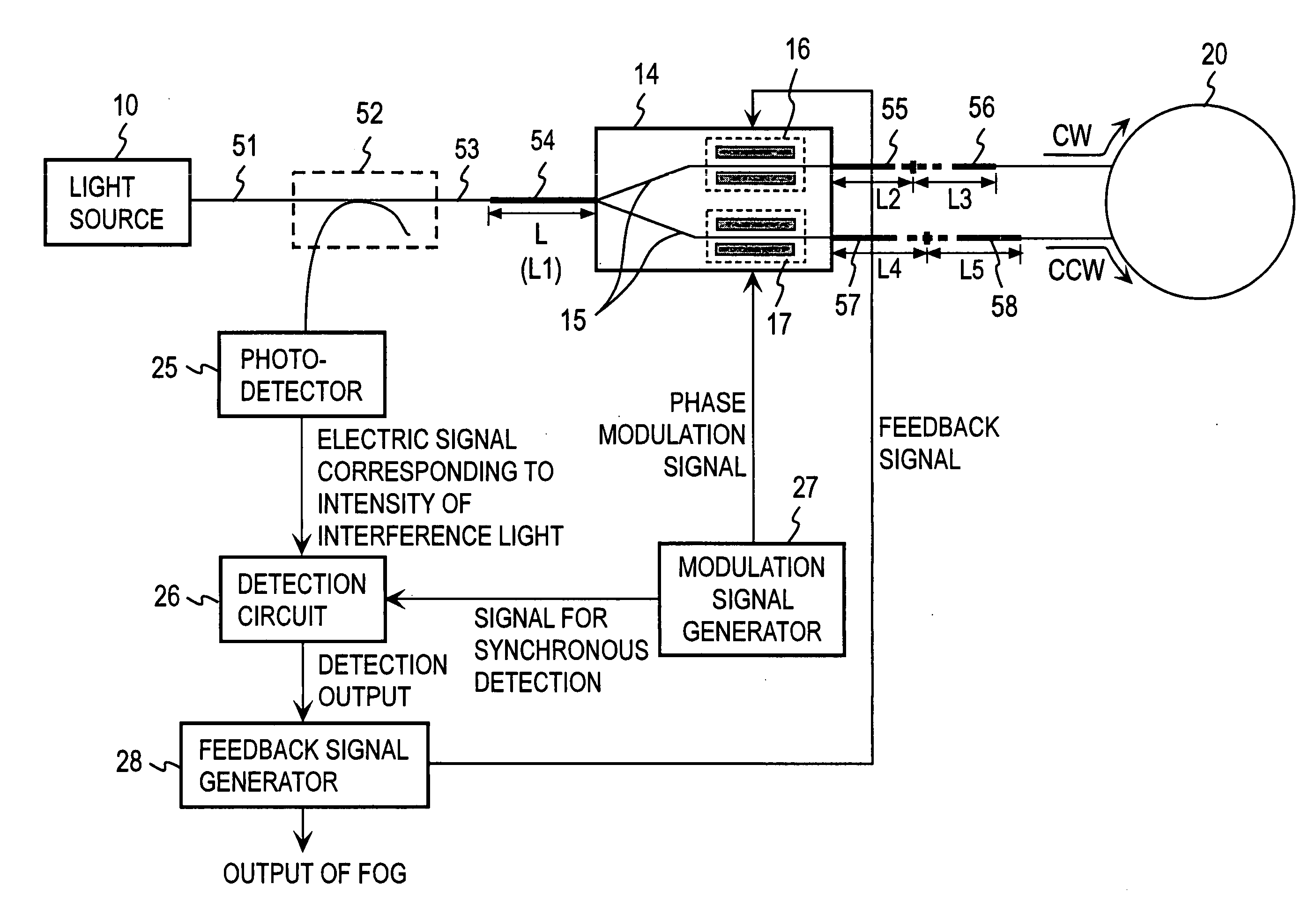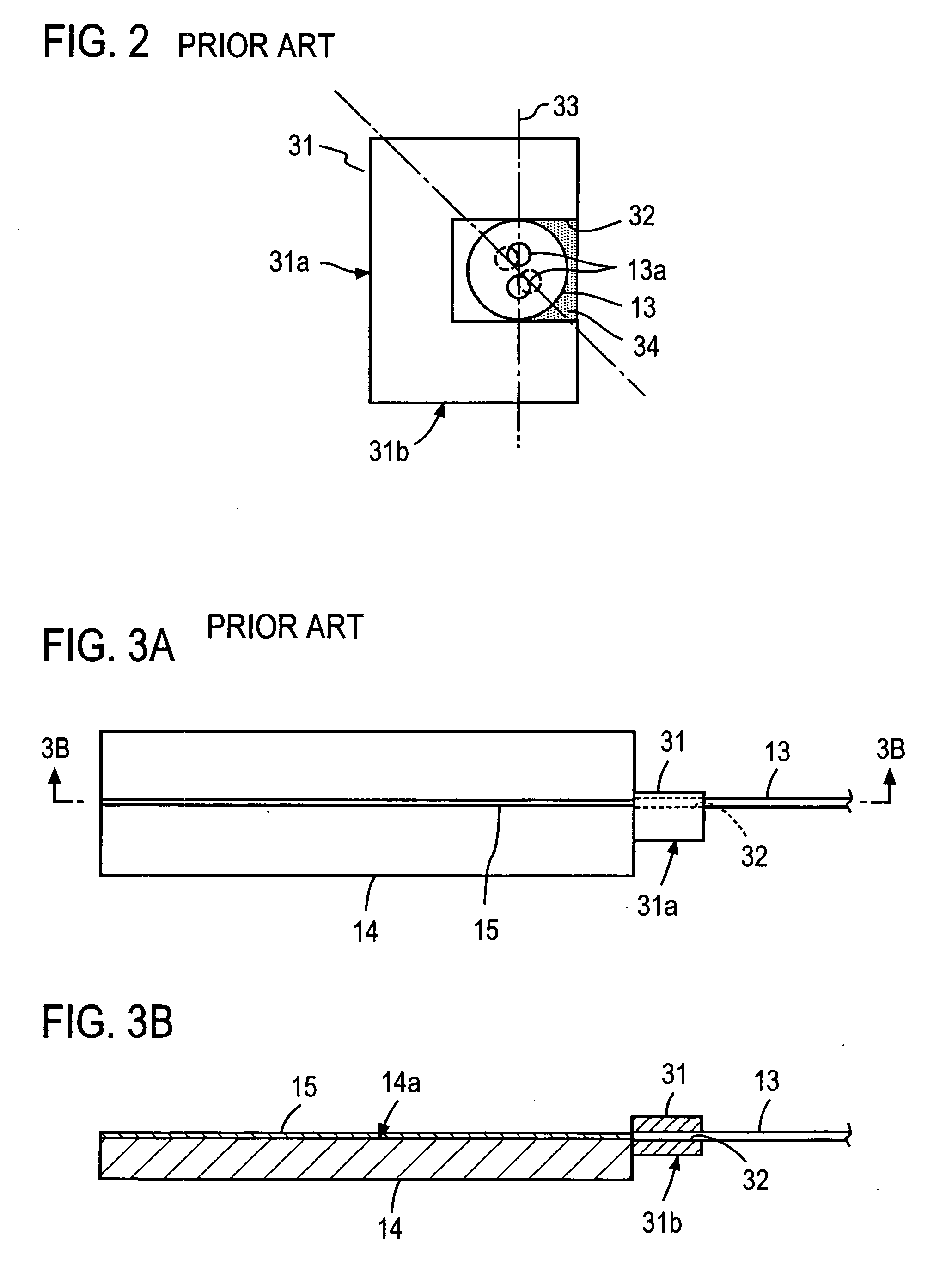Fiber optic gyroscope
a fiber optic gyroscope and fiber optic technology, applied in the field of fiber optic gyroscopes, can solve the problems of affecting the detection accuracy of optical fibers, the linear polarization of beam propagating through the coil is greatly susceptible to some influence to change, and the optical fiber maintains the plane of polarization much more expensive than a single-mode optical fiber, etc., to achieve the effect of high detection accuracy
- Summary
- Abstract
- Description
- Claims
- Application Information
AI Technical Summary
Benefits of technology
Problems solved by technology
Method used
Image
Examples
Embodiment Construction
[0031] An embodiment in which the present invention is applied to a closed loop fiber optic gyroscope will now be described with reference to FIG. 4. It is to be noted that in FIG. 4, elements and parts corresponding to those shown in FIG. 1 are designated by like reference characters, and will not be described specifically unless otherwise required.
[0032] Light beam emitted from a light source 10 is passed through a first optical fiber 51, an optical fiber coupler 52, a second optical fiber 53 and a third optical fiber 54 to impinge on a substrate-based optical integrated circuit 14. In the present embodiment, the first and the second optical fiber 51 and 53 and the optical fiber coupler 52 are constructed with a single mode optical fiber while the third optical fiber 54 is constructed with a polarization maintaining optical fiber having a length L. The third optical fiber 54 has an polarization axis 33 which coincides with the direction of the electric field Ex of the TE mode in ...
PUM
 Login to View More
Login to View More Abstract
Description
Claims
Application Information
 Login to View More
Login to View More - R&D
- Intellectual Property
- Life Sciences
- Materials
- Tech Scout
- Unparalleled Data Quality
- Higher Quality Content
- 60% Fewer Hallucinations
Browse by: Latest US Patents, China's latest patents, Technical Efficacy Thesaurus, Application Domain, Technology Topic, Popular Technical Reports.
© 2025 PatSnap. All rights reserved.Legal|Privacy policy|Modern Slavery Act Transparency Statement|Sitemap|About US| Contact US: help@patsnap.com



